Published 1 November 2020 ● Last Updated on 5 November 2021
Has this happened to you?
- You are at the checkout in the supermarket, and before you can say a word, the cashier bags your cold milk carton in 2 plastic bags.
- You sit for a meal at a restaurant (now that COVID restrictions are finally lifting! Yay!), taking off your fabric mask to bite into the chicken rice, and the waiter promptly hands you a flimsy plastic bag to stow your mask away.
- You order a smoothie at the food court to enjoy back at your desk, and the waiter hands you a plastic cup, with a plastic straw, in a plastic carrier, and throws in some tissues too as a mark of good service.
Yes, I see you nodding your head!
Almost all of us who switch to an eco-friendly lifestyle inaugurate our journey the same way. We start with a realization of the mounting waste we are creating; then fast forward to frustration because the world seems to prefer convenience, not sustainability, in its decision making.
So what do we do? We buckle up for the challenge, of course! I and my fellow eco-warriors out there arm ourselves with our arsenal – a.k.a. Zero Waste Toolkit – because we need to put in that (little) extra effort and carry that (little) extra weight to achieve an eco-friendly lifestyle. Unfortunately, just when we thought we had all our bases covered… Coronavirus struck!
Already the world had seemed intent to thwart us: we had to move fast and early to refuse that straw, handover our own mug, offer our canvas shopping bag. Now we have the additional challenge of navigating the maze of good hygiene. So we have updated our toolkit for COVID-19 times. These may not take you all the way to zero waste – but they will help cut out a big chunk of trash from your life.
What zero waste essentials do you keep in your handbag? Do share your experiences and additions in the comments below!
[In the interest of true zero waste, use what you have instead of buying a new. However, I am sharing info on the brands I have used and liked in case you do need to buy these!]
Zero Waste Essential #1: Mask & Clean Mask Bag
While there had been varied protocols on mask usage across countries in the early stages of the pandemic, it is now clear that masks do provide protection and they have become item number 1 on the list of ‘what you should always carry’ when stepping out of home. Additionally, in many cities, the mask is complusory and you could even be fined if you are found without one!
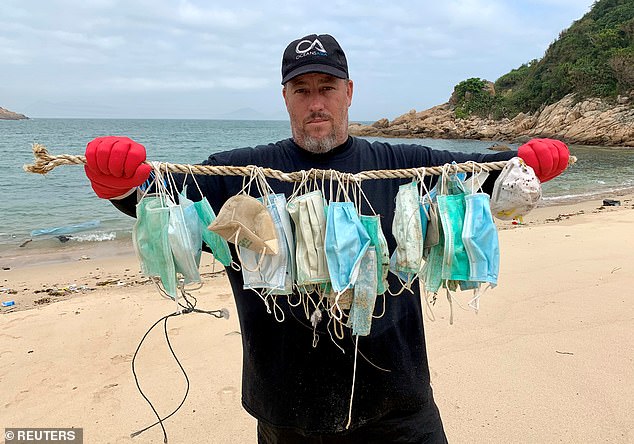
Why change | Though disposable masks keep you safe, they also add to landfill waste. Sadly, they are also increasingly showing up as litter in our pathways and pollution in our waterways – perhaps thrown inconsiderately, perhaps leaching from landfills.
What to use | When planning to purchase face masks, choose the material best suited to your needs. In a high-risk zone like hospitals, surgical grade masks or N95 respirators are prescribed – yes they are disposable, but they are necessary so do use them anyway – AND dispose mindfully. In low-risk situations where you have limited contact with people (such as a walk in the park) a 3-layered reusable cloth mask provides sufficient protection as per the WHO guidelines (eco friendly too!). If you are wondering what is safe, refer to this guide by CDC; and if you are looking to buy, support local eco goods platforms in Singapore such as The Green Collective and Green Day App. And remember – using the mask correctly is as important as choosing the correct mask!
One important aspect of mask hygiene that we tend to overlook is proper storage of the mask when we take it off outside (as well as at home). Do not leave your mask on the table – that is an absolute no-no! You can keep the mask in your pocket or bag. My family and I use DIY tetra pack pouches to keep the face masks (added bonus: you can even wash them as the material is waterproof!).
Zero Waste Essential #2: Hand Sanitiser
When it comes to hand hygiene, remember that washing your hands vigorously for 40-60 seconds with soap and water is the most effective way to keep the germs and virus away.
Why change | In situations when water or soap or both are not available, we need to turn to the alternative – hand sanitizers. For many, these were already on the ‘must have in bag items’ but now, thanks to Covid-19, they have become a part of our essential toolkit.
What to use | Use a hand sanitiser that has at least 60% to 95% alcohol content – this will be most effective when you don’t have access to soap and water. Take a look at some of the dos and don’ts when using alcohol-based hand sanitisers and if you would like to make your own at home, here is a guide from WHO.
Buy big bottles of hand sanitizers and refill your smaller bottles at home (or even spray bottles that are lying around!). This small action ensures a reduction in the plastic bottle waste that you could create. If you’re looking for a home-grown brand, we recommend Simply Good and Speco.
Zero Waste Essential #3: Reusable Water Bottle
Believe it or not, this cut off the biggest chunk from the waste I generated on the road. Now, my reusable bottle goes anywhere I go – yoga, meetings, walks, planes… it is a permanent fixture in my handbag after the wallet, mobile and keys! My last few years have seen zero purchase of bottled water.
Why change | One of the main reasons for my shift to carry my own water bottle was the realisation that in many cases bottled water in stores is simply bottled tap water, sometimes treated… sometimes not! When we buy PET bottles of water, we are actually paying for convenience, not necessarily the “cleaner” water. And yet it is a huge industry, estimated to be USD 159.68 billion in 2019 and still growing.
A million bottles a minute – that’s how many plastic water bottles are sold worldwide every year. As we already can guess, most of these bottles will end up in landfills or the oceans, as recycling rates are abysmal worldwide (Singapore recycled just 4% of plastic waste in 2019, compared to about 20% world average) and responsible incineration of waste isn’t widely practiced. If we don’t want to be swimming in an ocean of plastic bottles in the future, we must reduce plastic use in our daily lives. Carrying your own bottle is step 1!
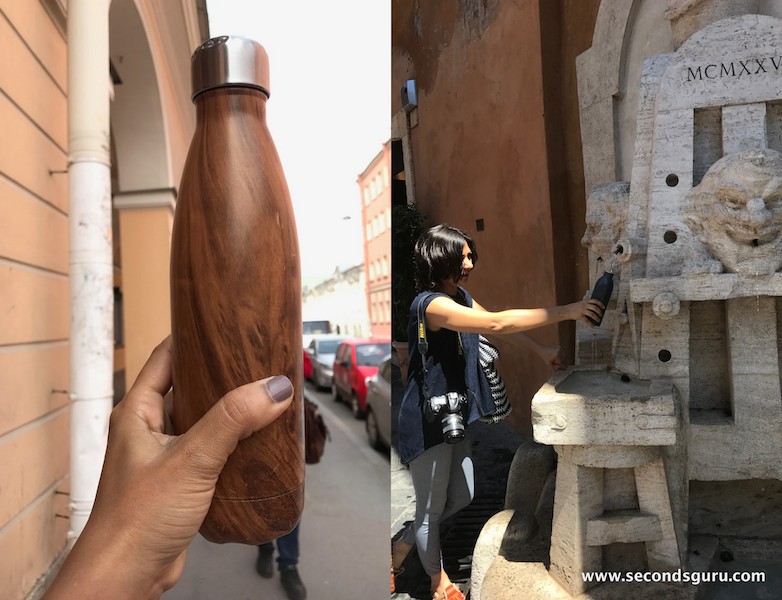
What to use | You can use a plastic refillable bottle if you have extras at home to choose from, or want the lightest bottle option – but do ensure it is food grade BPA-free plastic, and hand it in for recycling when you feel it is too scratched/old to continue with! If you are looking to buy, invest in a sturdy, reusable water bottle that will last for years. My personal favourite is Klean Kanteen – made of high quality metal that avoids dents against all odds, and should you lose the bottle tops, they are available for purchase separately.
Zero Waste Essential #4: Shopping Bag
I am not a big shopper, but I never know when I’ll end up picking up something – and so I always carry at least 2 folded bags in my bag!
Why change | ANY bag that you expect to use just once or twice – not just a plastic bag – is a problem. Paper bags are land intensive to produce. Cloth bags have a high water and land footprint – yes, higher than plastic bags. Plastic bags have acquired a more toxic reputation now because they are made from fossil fuels, and also are among the top 10 litter items in our oceans – no surprise because they are often flimsy, easily fly off to create litter, and are non biodegradable. And as time goes by, they disintegrate into microplastics that eventually end up entering our bodies. In the long run, the Earth’s shoulder’s (and yours!) will much prefer the burden of a sturdy bag that lasts years.
What to use | If you have a bag at home – be it cloth or sturdy plastic – use it, again and again. And again. I typically carry along canvas and cotton bags – like the block-printed piece in the picture above – because they carry weight comfortably, are washable, last for years, and honestly, look good too! If you are looking to buy, invest in something stitched to last.
Zero Waste Essential #5: Reusable Mug
Isn’t it strange how people can be so picky about where the tea leaves originated, and how exactly the coffee was ground, and just how hot the beverage is served…. and then pay no heed to whether they are drinking out of a ceramic mug or a plastic-lined disposable cup?! Whether you are a connoisseur or an eco-warrior, you need your own mug.
Why change | Disposable cups – like all food contaminated items – cannot be recycled as-is. They may look like paper – but they typically have a plastic lining, which means they aren’t biodegradable. Also, if you prefer to keep hot liquids away from plastic, this is a deal-breaker.
What to use | Request for reusable mugs when you are sitting in a cafe. If you have an office pantry you visit during the day, you can simply move a ceramic mug from your home kitchen there instead of purchasing something new. Case in point for making do: I inherited by Thermos Foogo from my (then) toddlers when they graduated from kindergarten and moved to bigger water bottles. You many not want to buy a kids product at the outset 🙂 – but if you like your drinks hot and sealed -look out for insulated mugs out there.
Yes, there are question marks on reusables at this time and some cafes have moved to disposables – but if you see this study, you’ll note that fear of contamination from reusables is exaggerated. Safety procedures need to be followed – whether for reusables or disposables; and in fact “Currently there is no evidence of food, food containers, or food packaging being associated with transmission of COVID-19”, affirms the Food and Drugs Association (USA).
Zero Waste Essential #6: Takeaway Box and Reusable Cutlery
Whether packing up unfinished food, or buying nuts and bakery off-the-shelf, the takeaway box is a very useful thing to have. What makes it necessary is if you frequent eateries that serve food in disposables.
Why change | Restaurants serve such a huge number of people everyday – it is unconscionable if they pile up disposables for every customer they serve! Contaminated by food, these serve-ware cannot be recycled. Even “compostable” options such as cornware usually need certain conditions to biodegrade, and reality is these single-use items will end up in the incinerator or landfill and even the oceans!
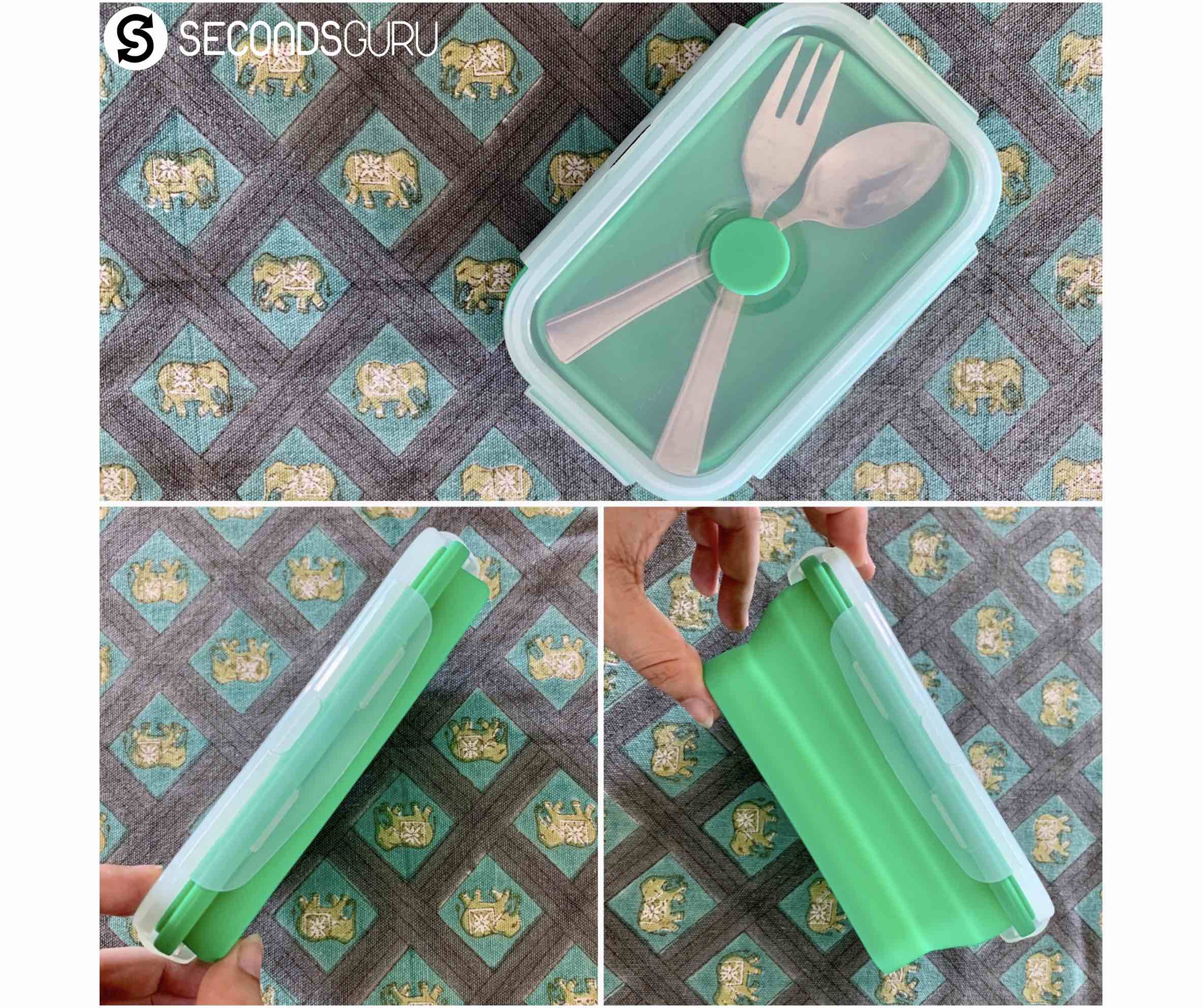
What to use | Replace the disposables with a more permanent solution; carry your own takeaway box for Tapao (i.e. takeaway). Initially, I used to carry older food-grade plastic boxes we had lying around the house. Then I invested in a reusable lunch box and it turned out a smart investment – the collapsible silicon box fits easily in any and all of my bags, which means I carry it with me more often! When I pack cutlery, I use regular stainless steel forks and spoons, wrapped in reusable cloth napkins.
Zero Waste Essential #7: Straws
These aren’t a must-have in my daily toolkit suggestions. But they are worth investing in – for reasons below.
Why change | The flimsiness of straws means they often land up as litter in water or roadsides. If you have seen the disturbing videos – and there are so many! – of sea turtles with straws stuck up their noses, then it won’t surprise you that straws and stirrers are among the top 10 litter items found washed up on shorelines – worldwide as well as in Singapore.
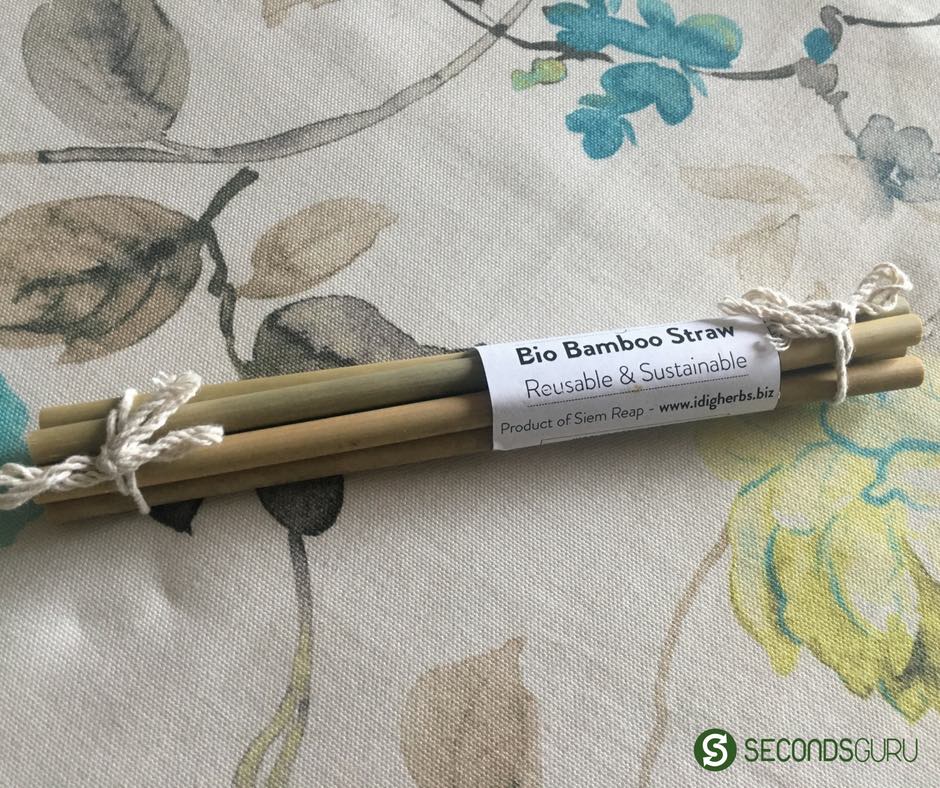
What to use | I don’t carry straws in my daily bag because I feel no need to use them in my daily routine. (But I still need to work on being loud enough and fast enough to avoid them in my drinks!). Washable, biodegradable – reusable bamboo straws are great for young kids – perfect for drinking up fresh coconuts, and dressing up smoothies! I picked up mine on a trip to Vietnam from a local artisanal shop. However, the only drawback is that you must ensure the straws are completely dry before reusing them again. At home, we now regularly use good quality stainless steel straws – easy to clean and they dry out fast. Next time I head out for a holiday (Oh, how I wish it is soon!) I plan to carry these to my travel destinations – honestly, how many resorts have you been to that are evolved enough to give up plastic? I’d hate to add to the plastic waste on the islands we visit over holidays, so I may as well carry my own straws.
To pick straws / cutlery for your zero waste toolkit, head to any of Singapore’s many zero waste stores, or pick them online from the Bamboo Straw Girl.
Keep your bags packed
We hope that this list of essential and environmentally friendly items in your bag will help you be better prepared when you step out. It may seem a bit cumbersome at the beginning, but trust me, once you start – you will feel good about the change you’re making, you may even inspire someone else to make the change and our planet will thank you for it.
Did we miss something? Do share with us what eco essentials you have in your handbag.
Related Articles
Tips | 8 changes you can make today to make your bathroom more eco-friendly
Buying without packaging? These shops make zero waste possible in Singapore

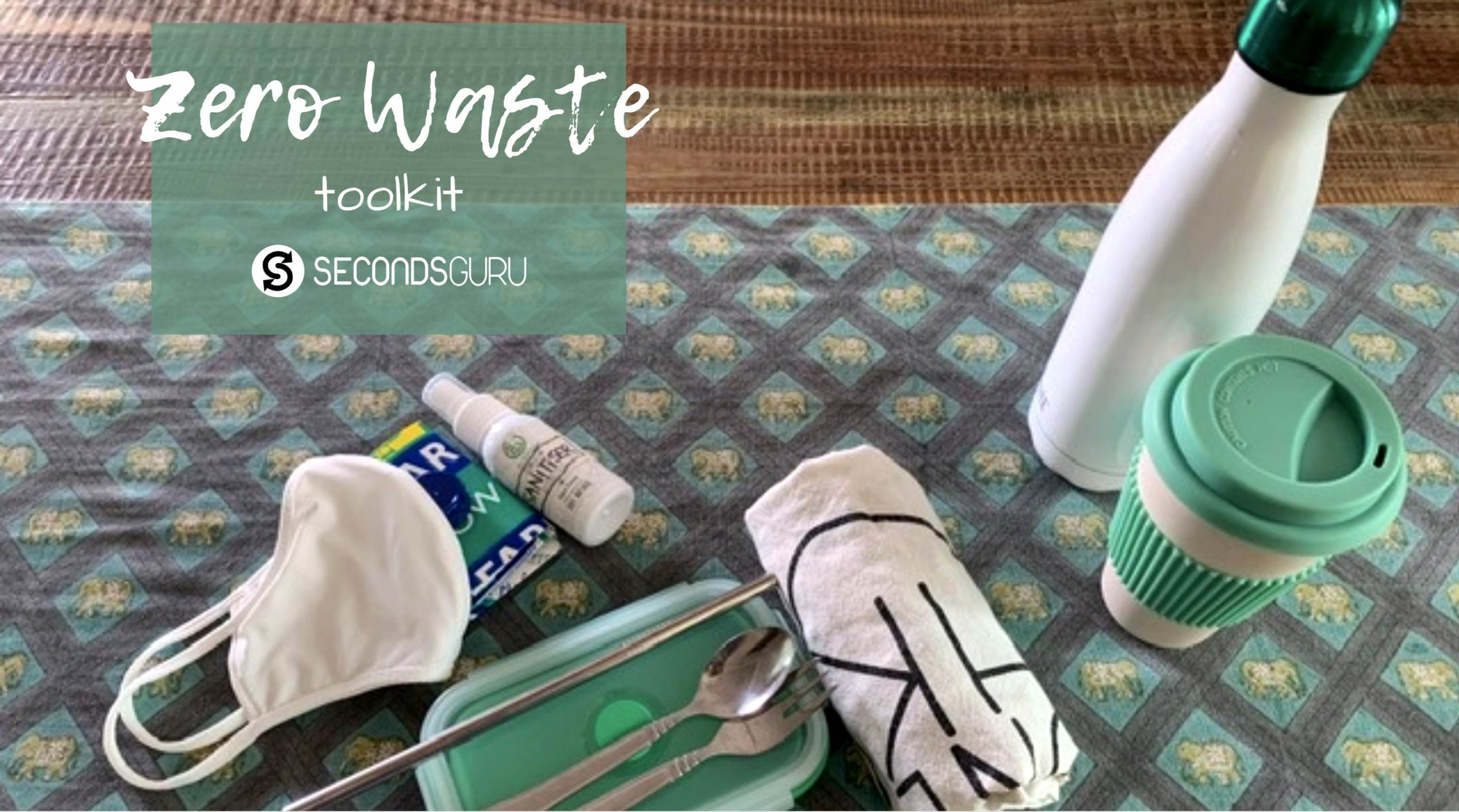
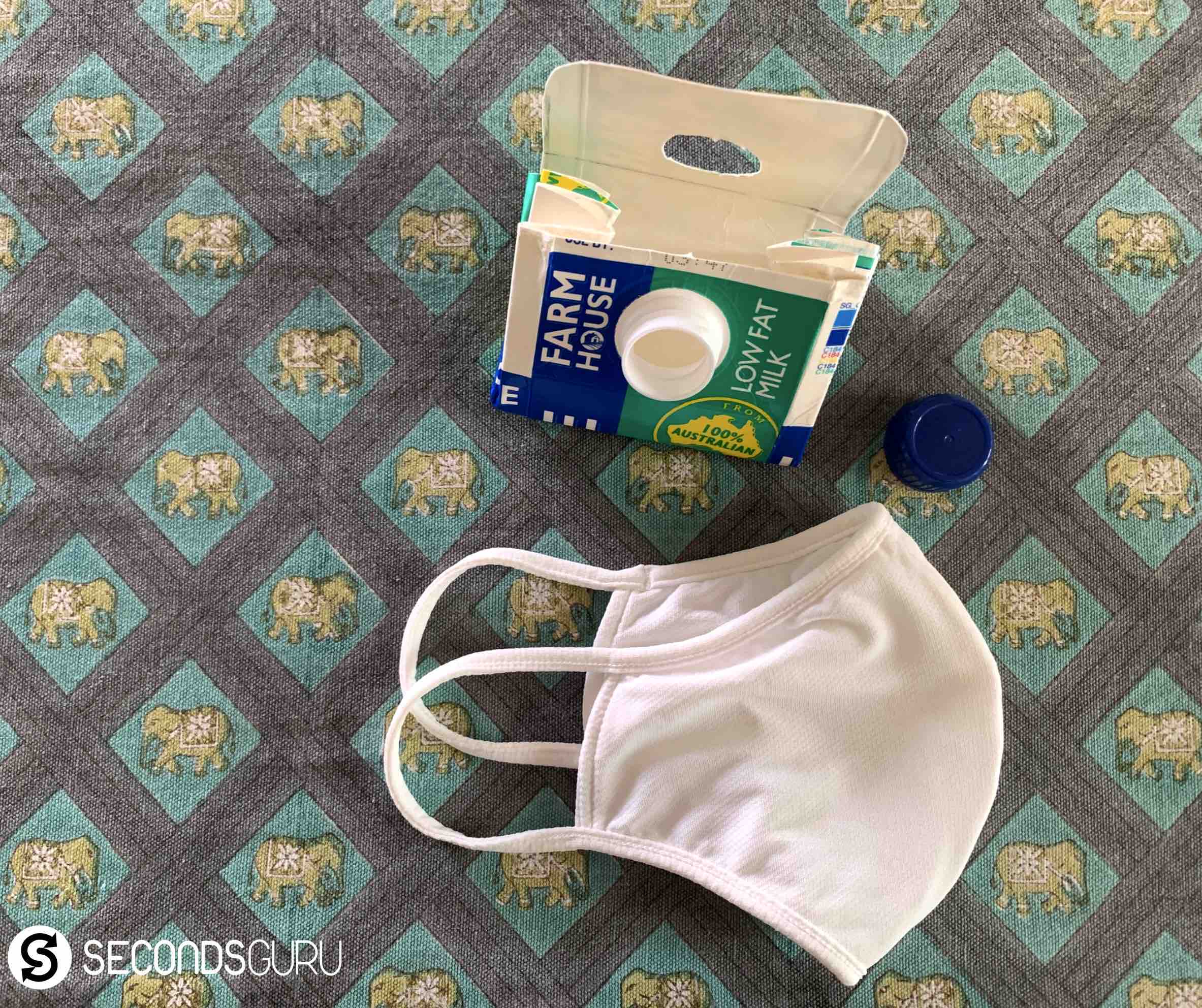
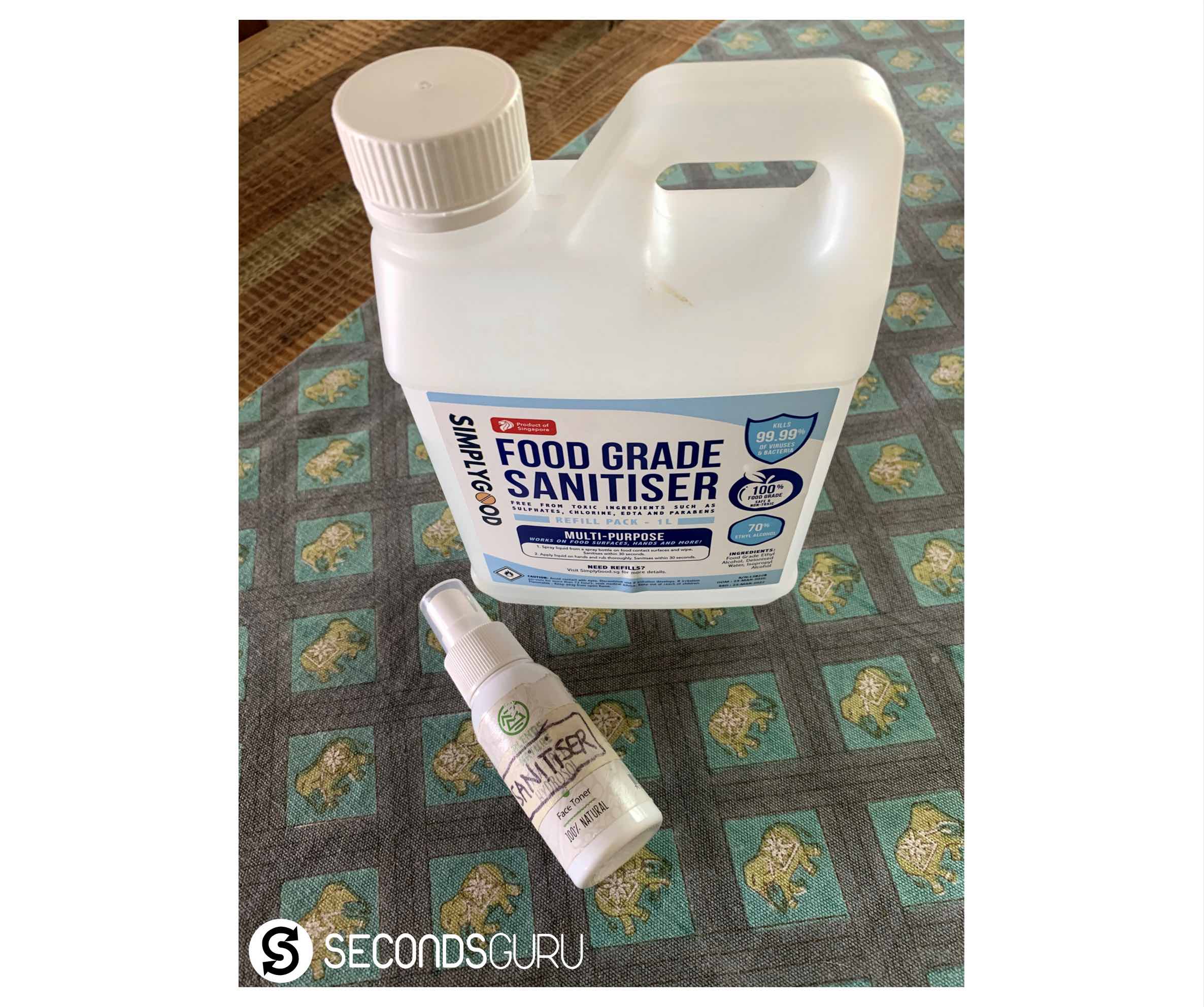
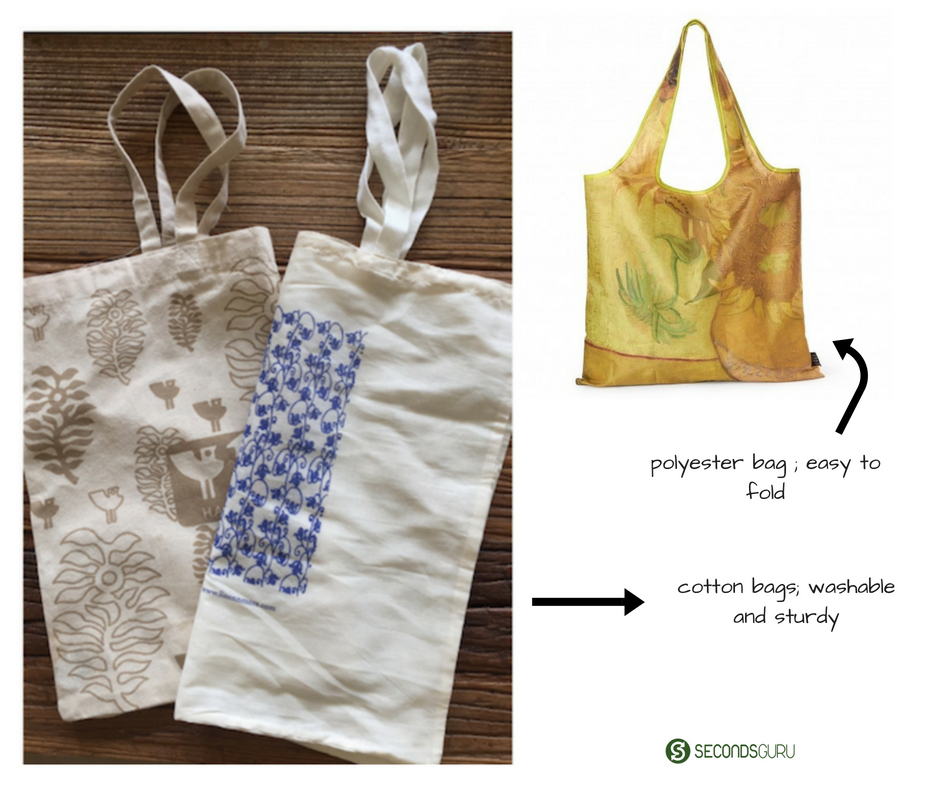

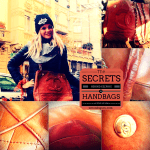
JARED MCMILLEN
13 September 2021Thanks for the timely post Anuja. These toolkits are vert important to carry when going out especially during the pandemic. I too personally use my own tools everytime I go out starting from my own forks and straws. However, my tools are not eco-friendly. But thanks to you for inspiring me switch to eco-friendly toolkits.
Anuja Byotra
13 September 2021Hi Jared – glad to know this article resonated with your eco spirit!